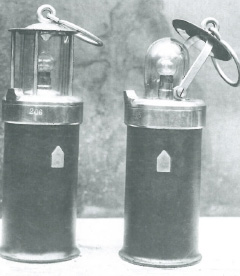For decades, most of the ills of nickel-cadmium batteries have been attributed to the memory effect. In particular, the term has been confused with cyclic memory, which occurs when the Ni-Cd cell 'remembers' how much energy has been drawn in previous discharges, and discharges beyond normal operation cause a sudden drop in voltage. However, modern industrial Ni-Cd cells no longer suffer from cyclic memory.
The memory effect in the true sense of the word was observed in the 1960s in Ni-Cd cells with sintered plates. Batteries onboard satellites were discharged to 25 percent of capacity every half day and recharged for half a day after the spacecraft emerged again from the shadow of the Earth. After countless of these cycles, a significant loss of capacity began to be evident once the 25 percent discharge threshold was crossed. Down on Earth, however, it was impossible to reproduce this effect, and in one particular case it did not occur even after more than 700 precisely controlled charge and discharge cycles (Zahran, 2006).
Watch out for crystals
Conversely, a well-documented phenomenon affecting even modern nickel-cadmium cells is the formation of crystals due to poor battery handling. The hexagonal cadmium-hydroxide crystals on the anode of a Ni-Cd cell have a standard cross-section of approximately 1 micrometer, with the largest surface area of the active material exposed to the electrolyte. However, if the battery is overcharged for a long period of time and not maintained by regular discharge, the crystals will grow to tens of micrometers in size within a few months. This reduces the total surface area of the active material and thus its ability to bind ions with opposite charge. In cells with sintered plates, the sharp edges of the crystals can even grow through the separator, causing sudden self-discharge or even a short circuit.
In the public debate, the term memory effect may denote a lot of things. But used correctly, it refers only to the second discharge stage of a Ni-Cd cell caused by reversible recrystallization of the cadmium electrode active material.
If the crystals have already grown to a size that negatively affects the function of the cell, it is sufficient to discharge more slowly and to a lower voltage. For example, tests conducted by the US Army have shown that discharging to 0.6 V will break even resistant crystal formations. The same testing has shown that even after six months of operation of a restored cell, in the vast majority of cases, there is no noticeable regrowth of crystals. Alternatively, the cell can also be exposed to a high current pulse, which literally burns the metal needles of the crystals and their size drops to 3-5 microns (Buchman, 2017).
In compact sealed nickel-cadmium cells that are used in electronics or aerospace, crystallization can be easily prevented by regularly discharging the cell in regular intervals, typically once a year to around 1.0 V. In larger industrial nickel-cadmium batteries, crystallization is prevented with special micro-structural additives in the active mass, but as well with a sufficient ratio of positive and negative active masses, as the space is not a strict constraint in an industrial installation.
Float effect isn’t memory effect
In addition, there is a phenomenon called float effect that manifests itself as a memory effect in that it can also be evaluated by the Battery Management System as a loss of capacity. This is generally caused by a typical application of standby battery systems. From discharged to fully charged state, Ni(OH)2 converts to NiOOH while releasing one hydrogen molecule that produces H2O by oxidation. When the battery is put to a in float charge afterwards, as a result of overcharging the cell, the nickel-oxyhydroxide crystals at the cathode are converted from a beta structure (β-NiOOH) to a γ-NiOOH structure, with approximately 2.5Å higher inter-molecular space. Furthermore, the electrochemical potential of the gamma form is approximately 40 to 50 mV lower based on discharge rate.
This results in a voltage depression particularly during high rate of discharge, i.e. higher than 0.25C5 rate, and with higher system cutoff voltage, i.e. greater than 1.0V per cell. But when the floated cells are discharged at a rate lower than around 0.25C5 with end-of discharge voltage 1.0V per cell, the cells exhibit a higher coulombic capacity, meaning better performance. This float effect phenomenon is predictable and is typically compensated with additional designed capacity sized according to the specific application. Anyway, the voltage depression can as well be easily eliminated by fully discharging and recharging the battery, not only by boost-charging the cells (Nishimura, 1995).
Thus, modern Ni-Cd batteries do not suffer from any memory effect, but the crystals of both active materials can grow larger. And although Ni-Cd cells generally don't require much maintenance, especially compared to Li-ion technology, they don't like mistreatment either. Yet to keep a Ni-Cd battery working well for 20 years or more, you just need to follow a few simple rules as specified by the manufacturer, which should be standard when handling any kind of battery.
And what about Li-ion?In 2013, scientists at the Paul Scherrer Institute and Toyota Research Laboratories discovered a memory effect in a type of lithium-ion battery with a positive electrode made of lithium phosphate and iron (LiFePO4). The battery of a hybrid car is partially recharged by regeneration each time it brakes, and only partially discharged again during acceleration. Continuous successive incomplete charge and discharge cycles lead to a distribution of the active material based on different lithium concentrations, which may impede the smooth flow of ions in the cell. However, according to Sasaki, Ukyo and Novák, this memory effect disappears on its own after a long enough period of battery inactivity after it has been fully discharged. |






